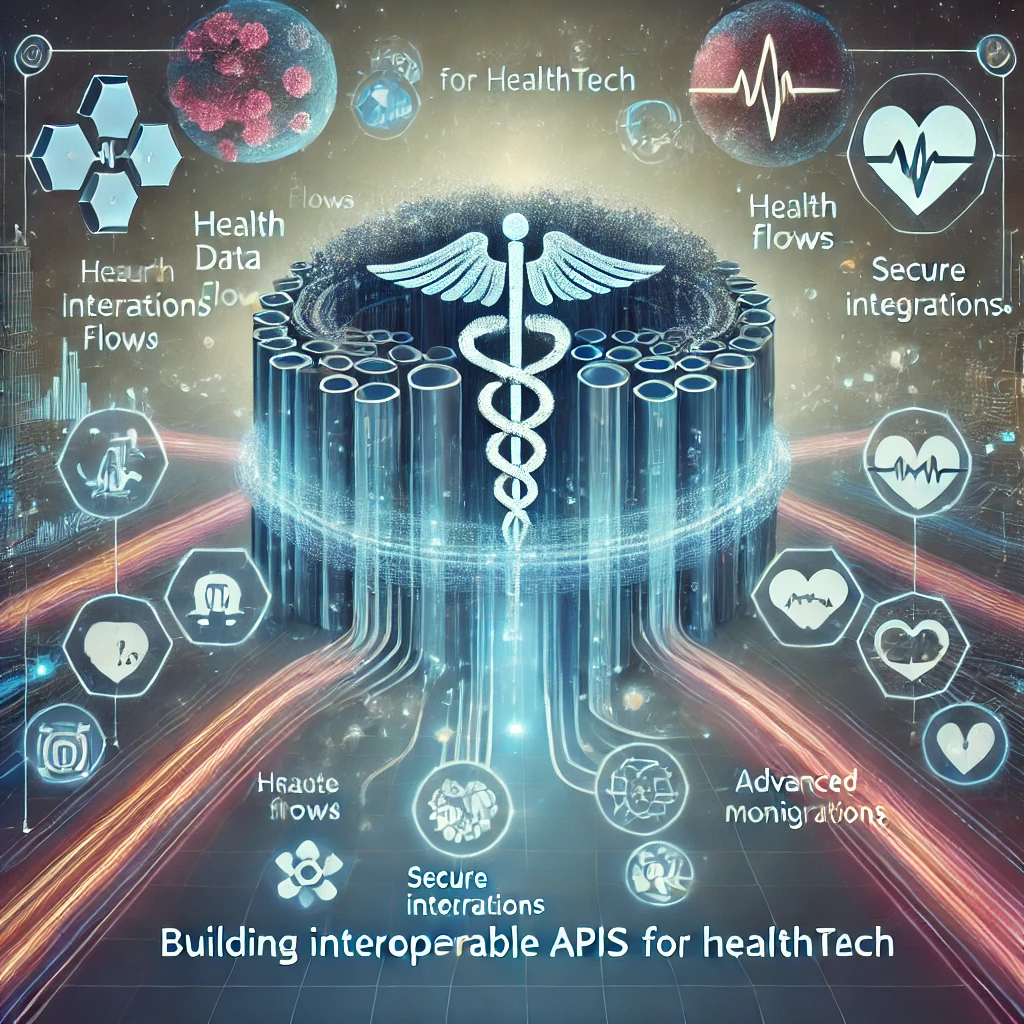Building Interoperable APIs for HealthTech with Syncloop

This blog explores how Syncloop simplifies the creation of interoperable APIs for HealthTech, fostering innovation and efficiency in healthcare delivery.
Why Interoperability Matters in HealthTech
- Improved Patient Outcomes: Facilitates comprehensive and timely access to patient data.
- Enhanced Efficiency: Reduces redundancies and streamlines healthcare workflows.
- Compliance: Meets regulatory requirements for data exchange, such as HL7 and FHIR standards.
- Collaboration: Supports seamless communication across healthcare providers and systems.
- Innovation: Enables the integration of advanced technologies like AI and IoT.
Challenges in Building Interoperable APIs for HealthTech
- Diverse Standards: Handling various healthcare data standards like FHIR, HL7, and DICOM.
- Data Security: Ensuring compliance with HIPAA, GDPR, and other privacy regulations.
- Scalability: Managing the growing volume of healthcare data and user interactions.
- Latency Sensitivity: Minimizing delays in time-critical medical applications.
- Legacy Systems: Integrating with older systems while maintaining compatibility.
How Syncloop Simplifies Interoperable API Development
1. Support for Healthcare Standards
Syncloop natively supports healthcare-specific standards for seamless integration.
- Features:
- Pre-built connectors for FHIR, HL7, and DICOM.
- Data transformation tools to map between standards.
- Benefits:
- Reduces development time by automating standard compliance.
- Ensures compatibility across diverse healthcare systems.
- Use Case: Exchanging patient data between a hospital EHR system and a third-party telehealth platform.
2. Data Security and Compliance
Syncloop enforces robust security measures to protect sensitive healthcare data.
- Features:
- End-to-end encryption for secure data transmission.
- Role-based access control (RBAC) for managing API permissions.
- Benefits:
- Ensures compliance with HIPAA, GDPR, and other regulations.
- Protects patient data against unauthorized access.
- Use Case: Securing data exchanges between a wearable device and a healthcare provider’s database.
3. Real-Time Data Exchange
Syncloop enables real-time communication for time-sensitive healthcare applications.
- Features:
- WebSocket APIs for low-latency data streaming.
- Event-driven architecture for instant updates.
- Benefits:
- Facilitates quick decision-making in critical care scenarios.
- Supports dynamic patient monitoring systems.
- Use Case: Streaming real-time vitals from IoT devices to a doctor’s dashboard.
4. Integration with Legacy Systems
Syncloop bridges the gap between modern APIs and legacy healthcare systems.
- Features:
- Protocol translation for SOAP, REST, and GraphQL compatibility.
- Tools for integrating older systems with minimal disruption.
- Benefits:
- Extends the lifecycle of legacy systems.
- Ensures smooth transitions during modernization efforts.
- Use Case: Connecting an old radiology system with a cloud-based diagnostics platform.
5. Scalable Infrastructure
Syncloop’s auto-scaling capabilities ensure APIs can handle growing demands.
- Features:
- Dynamic scaling for fluctuating data volumes.
- Load balancing to optimize performance.
- Benefits:
- Maintains reliability during high usage.
- Reduces costs by scaling down during low activity.
- Use Case: Scaling API usage during a health crisis when patient data requests surge.
6. Comprehensive Monitoring and Analytics
Syncloop provides real-time monitoring and analytics tools for API performance.
- Features:
- Dashboards for tracking latency, throughput, and errors.
- Alerts for anomalies in data exchange or API performance.
- Benefits:
- Proactively identifies issues to ensure reliability.
- Provides insights to optimize API performance.
- Use Case: Monitoring API health in a patient management system used by multiple clinics.
7. Advanced Workflow Automation
Syncloop enables the automation of complex healthcare workflows.
- Features:
- Conditional logic for dynamic API task execution.
- Pre-built templates for common healthcare processes.
- Benefits:
- Reduces manual effort in repetitive tasks.
- Ensures consistency in multi-step workflows.
- Use Case: Automating lab result submissions to an EHR system.
Benefits of Using Syncloop for Interoperable APIs
1. Improved Data Exchange
Ensures seamless communication between diverse healthcare systems.
2. Enhanced Security
Safeguards sensitive patient data with robust encryption and access controls.
3. Faster Development
Pre-built tools and connectors simplify API creation and integration.
4. Scalable Solutions
Handles growing demands with auto-scaling and load balancing.
5. Real-Time Insights
Provides actionable data for optimizing healthcare operations.
Real-World Applications of Syncloop in HealthTech
1. Telemedicine
- Use Case: Integrating APIs for patient scheduling, video consultations, and medical records.
- Benefit: Enhances accessibility and efficiency in virtual care.
2. Remote Patient Monitoring
- Use Case: Streaming real-time data from wearable devices to healthcare providers.
- Benefit: Enables proactive interventions and continuous care.
3. EHR Integration
- Use Case: Connecting third-party applications with hospital EHR systems for data sharing.
- Benefit: Reduces redundancies and improves care coordination.
4. Medical Imaging
- Use Case: Transmitting DICOM images between diagnostic tools and cloud storage.
- Benefit: Ensures fast and secure access to imaging data.
5. Health Analytics
- Use Case: Aggregating data from multiple sources for population health analysis.
- Benefit: Supports data-driven decision-making and policy planning.
Best Practices for Building Interoperable APIs with Syncloop
- Adopt Healthcare Standards: Use Syncloop’s pre-built connectors for compliance with FHIR, HL7, and DICOM.
- Ensure Data Security: Leverage encryption and RBAC to protect sensitive data.
- Design for Scalability: Configure auto-scaling to handle growing user bases and data volumes.
- Bridge Legacy Systems: Use protocol translation tools to integrate older platforms seamlessly.
- Monitor Continuously: Track performance metrics and resolve issues proactively.
The Future of Interoperable APIs with Syncloop
Syncloop is enhancing its platform with:
- AI-Powered Analytics: Leveraging machine learning for predictive insights in healthcare operations.
- Blockchain Integration: Ensuring immutable and secure health data exchange.
- Edge Computing Support: Reducing latency for real-time healthcare applications.
These innovations will further empower HealthTech developers to create advanced interoperable APIs, revolutionizing healthcare delivery.
Conclusion
Interoperable APIs are essential for creating connected, efficient, and innovative HealthTech ecosystems. Syncloop simplifies the development and management of these APIs, offering tools for seamless integration, robust security, and real-time performance.
By leveraging Syncloop, healthcare providers and developers can build solutions that enhance patient care, improve operational efficiency, and drive technological advancements in healthcare.
An infographic showcasing Syncloop-powered interoperable APIs for HealthTech, highlighting FHIR compliance, real-time data streaming, and legacy system integration.
Back to Blogs